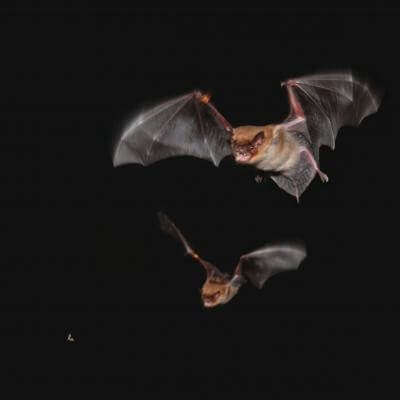As big brown bats wake up from their winter slumber and start zooming around in pursuit of insects to eat, how do they coordinate their activities in the dark of night? For one thing, according to researchers who report their findings on March 27 in the Cell Press journal Current Biology, males do it by telling other males to back off. In so doing, those vocal males—each with their own distinctive calls—increase their chances of a meal.
The study is the first to describe the bats’ ultrasonic food-claiming calls as distinct from those the animals use to locate their bug prey.
“Despite decades of study, many things about common bat behaviors such as foraging remain mysterious,” says Genevieve Wright of the University of Maryland. “We were able to study a social call that is likely occurring thousands of times a night all over North America during the summer months, yet had not been described or studied before now.”
Wright and her colleagues first got curious after examining audio recordings from two bats flying and foraging together. They noticed calls that seemed to differ from typical echolocation calls.
To find out more, the researchers let male and female big brown bats fly alone and in pairs while tempting them with tethered mealworms. Careful analysis of video and audio recordings of the bats’ flight paths and calls, respectively, revealed sequences of three to four calls, both longer in duration and lower in frequency than the big brown bats’ echolocation pulses. For reasons that the researchers can’t entirely explain yet, only males make those calls.
The males who emitted those calls were more likely to attack the mealworm while the other male moved farther away. Almost always—96% of the time, to be exact—the researchers could trace calls back to the specific male that made them, based on the calls’ unique features.
Wright says she doesn’t really know why only males make the foraging calls. Females do have to eat, but they may more often forage near related individuals in comparison to males. Some male bats also make mating calls that are similar in some respects to the newly described foraging calls, suggesting that they may have carried them over from use in one context to another. Whatever the answer, the findings are a reminder of the impressive social lives of bats as they go about their fast-paced, night lives.
“Male big brown bats use individually distinct social calls to repel other bats and increase their own chances of getting a meal,” Wright says.
“Acoustic communication in bats may be more sophisticated than was previously understood.”


